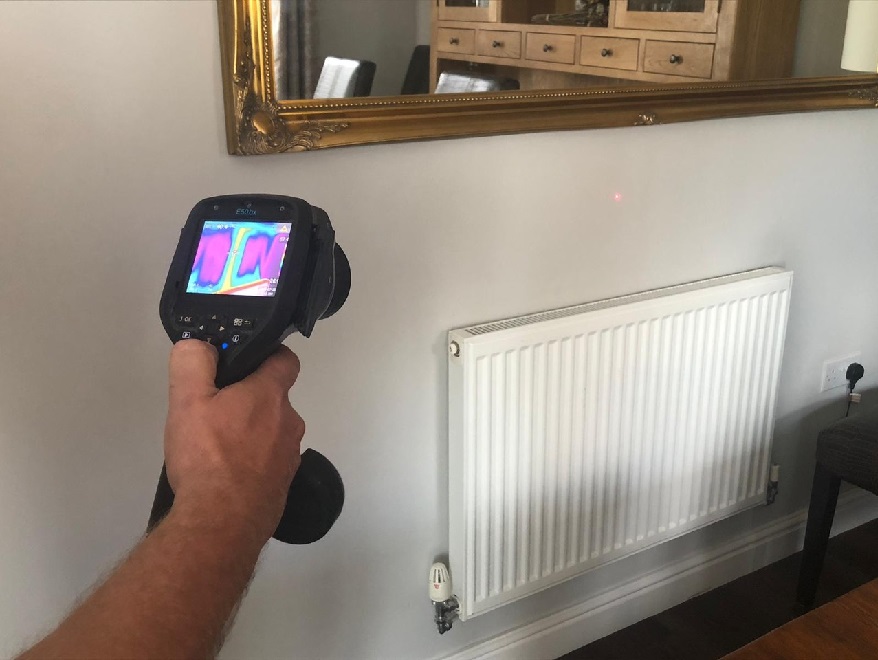
Everything You Need To Know About Central Heating
Generally, the primary purpose of heating is to ensure a sustainable comfort for you and your other occupants, by regulating the encircling temperatures of a room or an enclosed space.
That said, moving the heat where it’s wanted calls for more than just having the process and systems installed in your room.
So then, what is central heating? How does central heating system work? Are there common problems associated with central heating systems & boilers? If so, how do you spot them?
You don’t have to worry. This blog post covers every aspect of what you need to know about Central Heating.
Table of Content
What is Central Heating?
Central Heating is a thorough distribution of heat from a central point or source of heat to every enclosed space in your home.
The warm water provides heat/warmth thoroughly and evenly to the whole interior of the building via interconnected pipes.
The pipe network is connected to radiators in every room. In the case of underfloor heating, the pipe network is looped under the floor.
In both systems, a gentle heat is released into your home.
How do Central Heating Systems Work?
This could probably be one of the most common questions concerning the central heating system.
A central heating system using underfloor pipes to supply heat can be installed only in a new interior building or renovation, before lying the floor slab. On the other hand, a central heating system utilizing radiators mounted on the wall can be installed in both new and existing homes.
The radiators typically require relatively high temperatures that are currently obtained with combusting boilers. For the underfloor heating, the heaters use water with low temperature, which can use any heat source.
The heated water is pumped by the boilers into the radiators or through the underfloor pipes, and then the heat is gently released into the room.
Since there is no movement of fresh air; as a result, there is no cold and hot spots, draughts or even noisy fun to deal with. The heat passes unobtrusively warming the fabric and objects within the room.
The process is all through superefficient with no water consumed. When the water is up to the recommended temperature, the boiler switches off while the heat keeps on being emitted from the radiators or pipes.
It’s important to note that there are many and varied sources of heat, ranging from air to water heat pump, wood boiler, gas boiler, wood pellet boiler, diesel boiler and so many more.
Types of Central Heating Systems
There are many distinct central heating systems. Some of the most common include;
-
Wet systems.
The central heating in this kind involves, a radiator, boiler and when appropriate a heat exchanger. Wet systems are conventional in the UK where most homes have this form of central heating.
-
Storage heaters.
This is a central heating system that is powered by electricity. In this case, the storage heaters accumulate heat at night and then supplying the same during the day.
-
Warm air Systems.
This kind of heating system is prevalent in office blocks as well as in businesses. Although they are quite unusual in the UK, having a warm air system is nothing wrong.
Common Problems of Central Heating Systems
Some inner workings in a home central heating system come along with impenetrable mystery, especially when things are not right. For example, after a long time of disuse, a system may malfunction in the autumn when the heating is turned on.
Ideally, switching on your heating systems regularly during the summer or warmer months can ensure proper performance after that.
However, although you can call out a heating engineer or a professional plumber to help, dealing with issues such as water leaks in the central heating systems is not that audacious. This is because most of these problems are usually straightforward to fix all by yourself.
Here are some of the common problems associated with central heating systems.
-
Cold radiators or water taps.
Usually, the problem is caused by a blown heating fuse, limiting the supply of electricity to the heating system.
Nevertheless, you can try to scrutinize the situation by checking the thermostat which ideally should be on or between 17 and 20 degrees. If the radiators or the water taps don’t warm up, check the programmer and ensure that both the hot water (HW) and the central heating are on.
Should the issue persist, you can try turning on and off the motorized divert valve, usually next to the boiler.
-
The radiator heating at the bottom only
This is the most common and straightforward to fix. When this occurs, switch off the pump to stop air from entering the heating system. Then on the radiator you’re working on, place a bucket and put a square brass nut at one of the corners of the radiators.
Turn the nut anticlockwise until you hear air escaping from the radiator, say, between 45 to 90 degrees anticlockwise. The dirty water should later drip into the bucket.
-
A non-stopping over-flow.
The problem occurs side by side with water leaks in the central heating systems. If the ball-cock located in the water tank is jammed, it could lead to a running overflow. If this happens, try to fix the ball-cock or call the water leaks specialist or a heating engineer for more help.
Otherwise, it is always advisable to tackle the immersion tank with the assistance of water leaks specialist or such.
-
Loss of Pressure from the System
There are many reasons why the system may lose pressure; it widely occurs due to water leaks in the central heating systems. Another reason could be the air was taken out upon the bleeding of the radiator. If this happens you’ll have to refill the system with water via the filling loop.
If at all you don’t know how to go about it, you can consider checking the user manual or calling out a specialist.


